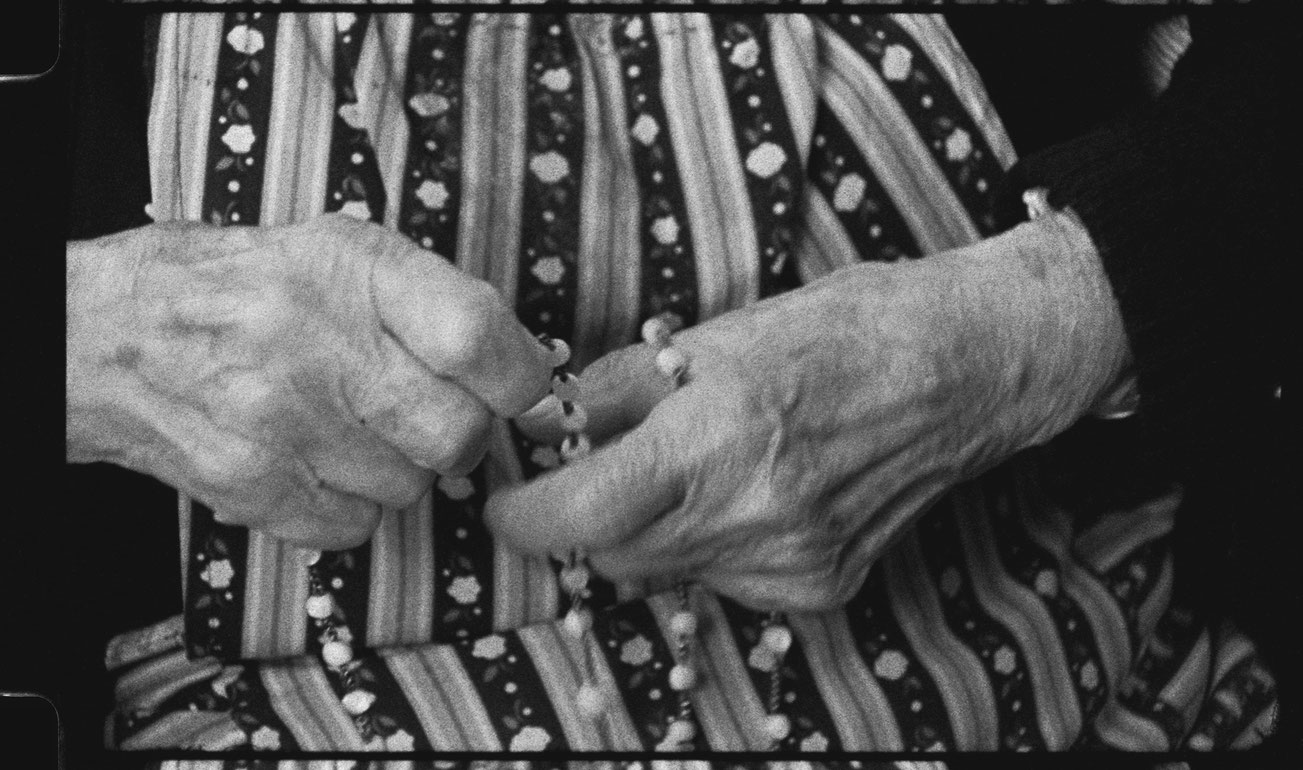Lacrimosa
Funeral ceremonies in the attic rooms of a spooky villa. The old aunt gathers her great-grandnieces around a child’s coffin to pray. Folded hands, furtive glances, rosaries a close stool are the ingredients of an eccentric children’s pageant in which the illustrious group stumbles from intimidation, rebellion, and a perilous staircase to pondering the sense of being. (production note)
In Josef Dabernig’s films, places, interiors, nooks and crannies, as well as the spaces of memory they contain, are the main protagonists – animated matter. For Lacrimosa, this principle applies doubly. The setting of the action, which could be the reenactment of a distant childhood experience, is the attic of a villa. Initially broken down into image fragments, it points to an absence: an empty bed, empty coat hangers, relics of a world of objects that has fallen out of time. Only then do the human actors appear: hands, young and old, folded in prayer or occupied with the beads of a rosary, and the bare soles of a kneeling child. The center of the somewhat miraculous choreography of repetitive patterns (and small system errors) is a child’s coffin set on a timber frame, later to be precariously maneuvered through a narrow stairwell. To say a prayer of final farewell, accompanied by the repetitive sounds of a funeral march, a group has gathered, consisting of Dabernig’s aunt and his grandchildren, wearing smock aprons, leggings, and a batik T-shirt. Occasionally, “modern” practices, such as swiping on a cellphone, creep into the religious rituals of the funeral ceremony. And suddenly the cords of a pair of sweatpants look like the successors to the rosary beads.
The place, which is interwoven with this setting by a voiceover narration (written by Bruno Pellandini and spoken by Johanna Orsini) that never becomes entirely congruent with it, exists on a different timeline. In the detailed depiction of a house, the room appears as a breathing organism made of skin and bones. Memories of sounds, textures, a funeral, and the family home’s previous existence as a wheelwright’s workshop leave an autobiographical trace behind. Or is there perhaps an autofiction behind Lacrimosa, whose title comes from part of the Dies Irae sequence in a requiem Mass? “Can you remember? Or was it only told to you?” (Esther Buss)
Translation: John Wojtowicz
Lacrimosa
2024
Austria
11 min
Avantgarde/Arts, Short fiction
German
English



